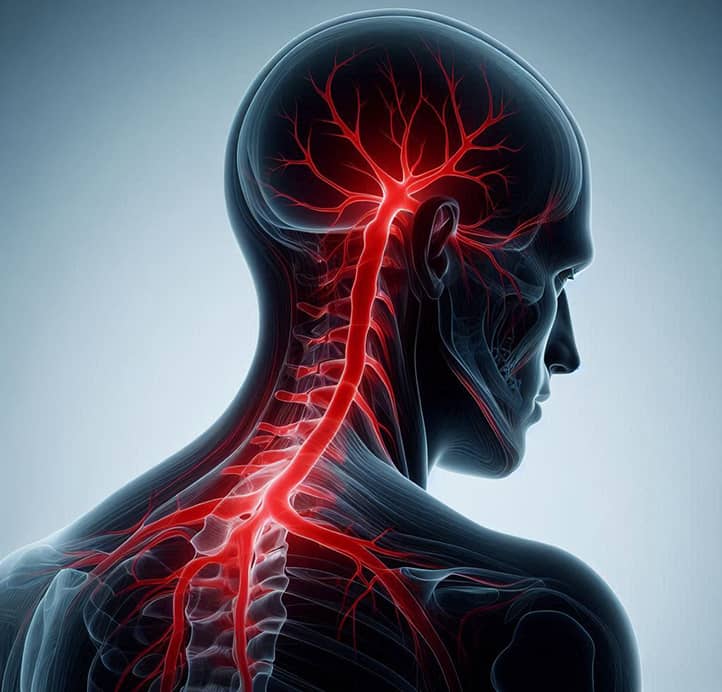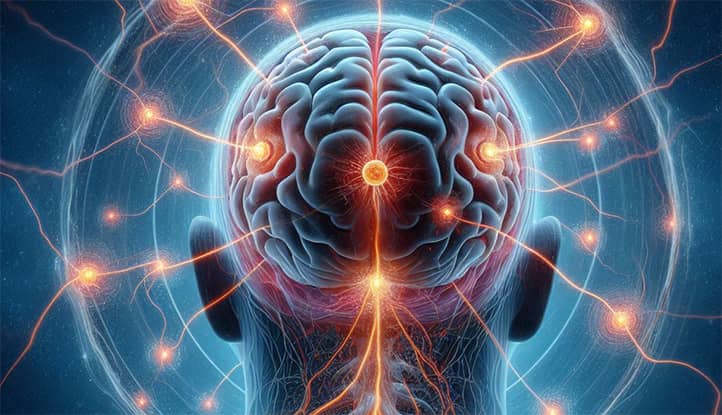Somatoform disorders are a group of mental disorders characterized by the presence of physical symptoms that cannot be fully explained by any known medical conditions, the direct effects of psychoactive substances, or other mental disorders. These symptoms cause significant distress and hinder communication, work, and other vital activities.
The key feature of somatoform disorders lies in their physical symptoms, which are not intentionally produced or feigned, as in factitious or malingering disorders. Patients with somatoform disorders genuinely experience real, often pronounced and distressing symptoms that lack a clear medical explanation.
Somatoform symptoms can affect virtually any organ system and vary in their duration and severity. They often include pain, fatigue, gastrointestinal issues, neurological symptoms, sexual or urological problems. Despite numerous medical examinations and reassurances from doctors, patients continue to worry about their health, pay excessive attention to bodily sensations, and seek medical help.
Somatoform disorders are quite common in the general population and medical practice. According to various studies, their prevalence ranges from 5 to 7% in primary care and up to 50% among patients in specialized clinics. They are more frequently observed in women than in men and can develop at any age, with a peak incidence between the ages of 20 and 30.
Somatoform disorders represent a serious medical and social problem. They cause significant suffering for patients, reduce their quality of life, and lead to impairments in family, professional, and social spheres. Additionally, they are associated with high direct and indirect economic costs due to frequent medical consultations, numerous diagnostic procedures, hospitalizations, and loss of productivity.
Despite their high prevalence and serious consequences, somatoform disorders often go unrecognized or inadequately treated. This is due to several factors, including insufficient awareness of psychosomatic issues among physicians, the stigma surrounding mental disorders, and the division of medical care into somatic and psychiatric sectors. To improve the diagnosis and treatment of somatoform disorders, it is necessary to enhance the knowledge and skills of primary care physicians, foster close cooperation among specialists from different fields, and implement integrated care models.

A brief history of the study and classification of somatoform disorders
The concept of somatoform disorders has a long history in psychiatry. Initially, these disorders were referred to as “hysteria” or “conversion hysteria,” emphasizing their presumed connection to repressed psychological conflicts and traumas that are “converted” into physical symptoms. The term “hysteria” was first used as early as ancient Egypt and ancient Greece to describe a variety of unexplained physical symptoms, which were believed to be caused by a “wandering womb” in women.
In the late 19th and early 20th centuries, hysteria was studied by many prominent psychiatrists and psychologists, including Jean-Martin Charcot, Pierre Janet, Sigmund Freud, and Josef Breuer. In their works, they linked hysterical symptoms to psychological mechanisms such as dissociation, conversion, and repression. Freud and Breuer developed the cathartic method aimed at bringing repressed emotions and conflicts underlying the hysterical symptoms into consciousness.
In the early 20th century, German psychiatrist Paul Federn introduced the term “somatization” to describe the process of expressing psychological distress through physical symptoms. He viewed somatization as a primitive defense mechanism typical of individuals with immature personality organization. The concept of somatization was further developed in the works of psychoanalysts Franz Alexander and Helen Dunbar, who studied the role of psychological factors in the development of psychosomatic diseases.
In 1980, in the third edition of the Diagnostic and Statistical Manual of Mental Disorders (DSM-III) by the American Psychiatric Association, somatoform disorders were first classified as a separate diagnostic category. These included somatization disorder (formerly known as Briquet’s syndrome), hypochondriasis, conversion disorder, psychogenic pain disorder, and atypical somatoform disorder.
In subsequent editions of the DSM (DSM-III-R, DSM-IV, DSM-IV-TR), the category of somatoform disorders underwent some changes but retained its general structure. In the International Classification of Diseases 10th Revision (ICD-10) by the World Health Organization, somatoform disorders are also classified under a separate section (F45) and include somatization disorder, undifferentiated somatoform disorder, hypochondriasis, somatoform autonomic dysfunction, and chronic somatoform pain disorder.
In DSM-5, published in 2013, the category of somatoform disorders was revised and renamed to “somatic symptom disorders.” This revision was intended to emphasize that the key feature of these disorders is not specific physical symptoms but their excessive significance for the patient, health-related anxiety, and associated dysfunctional thoughts, feelings, and behaviors. Additionally, DSM-5 eliminated the requirement of “medically unexplained” symptoms, acknowledging that the line between “explained” and “unexplained” symptoms is often blurred and depends on the current level of medical knowledge.
Despite these changes, the concept of somatoform disorders remains important for understanding and treating patients with persistent and clinically significant physical symptoms that lack an obvious medical cause.

Main Types of Somatoform Disorders
Somatoform disorders can manifest in various forms, each having its specific diagnostic criteria and clinical features. Despite their differences, all somatoform disorders share the presence of somatic symptoms that cause significant distress and interfere with daily activities.
Below, I will discuss the main types of somatoform disorders, including somatization, hypochondriacal, conversion, and pain disorders. For each type, I will describe the characteristic symptoms, diagnostic criteria, prevalence, and risk factors.
Somatization Disorder: Symptoms and Diagnostic Criteria
Somatization disorder (also known as Briquet’s syndrome or generalized somatoform disorder) is characterized by multiple, recurrent, and often changing physical symptoms that persist for several years. These symptoms cause significant distress and functional impairment, leading to frequent medical consultations or substantial lifestyle changes.
Patients with somatization disorder may complain of a wide range of symptoms affecting almost any organ system. The most common are symptoms from the following systems:
- Gastrointestinal tract: pain, discomfort, bloating, nausea, vomiting, diarrhea, constipation, intolerance to certain foods.
- Cardiovascular system: chest pain, palpitations, shortness of breath, dizziness, pre-syncope.
- Urogenital system: pain, discomfort, urinary issues, sexual dysfunction, menstrual irregularities.
- Skin and nervous system: itching, burning, numbness, paresthesia, seizures, muscle weakness, pseudoneurological symptoms.
To diagnose somatization disorder according to DSM-IV criteria, the following signs must be present:
- Multiple somatic complaints (at least four pain symptoms, two gastrointestinal symptoms, one sexual and one pseudoneurological symptom).
- Symptoms cannot be fully explained by any known general medical condition or the direct effect of a substance.
- Symptoms cause clinically significant distress or impairment in social, occupational, or other important areas of functioning.
- The disorder has lasted for at least two years.
- The disorder is not better explained by another mental disorder (depressive, anxiety, psychotic).
In DSM-5, somatization disorder was included in the broader category of “somatic symptom disorder,” which requires one or more somatic symptoms that cause significant distress and functional impairment, as well as excessive and maladaptive thoughts, feelings, and behaviors related to these symptoms or health concerns.
Prevalence and Risk Factors
The prevalence of somatization disorder in the general population is around 0.2–2%, but it can reach 5–7% among patients in primary care and specialized medical clinics. The disorder is more common in women than in men (with a ratio of about 5:1) and usually first manifests before the age of 30.
Risk factors for developing somatization disorder include:
- A family history of somatization disorder or other mental disorders among first-degree relatives.
- Childhood trauma (physical, sexual, emotional abuse, or the loss of close ones).
- Dysfunctional family relationships, lack of emotional support.
- Low socioeconomic status and financial difficulties.
- Comorbid mental disorders (depressive, anxiety, personality disorders).
- Certain personality traits (anxiety, alexithymia, neuroticism).
- Dysfunctional beliefs and ideas about health and illness.
Somatization disorder often coexists with other mental and physical illnesses, which significantly complicates its diagnosis and treatment. Comorbid conditions may include depressive and anxiety disorders, personality disorders, functional somatic syndromes (irritable bowel syndrome, fibromyalgia, chronic fatigue syndrome), as well as various somatic diseases.
Comorbid disorders are associated with a more severe course of somatization disorder, greater symptom intensity and persistence, more frequent medical consultations, and poorer social functioning and quality of life. Therefore, an important component of treating patients with somatization disorder is the timely diagnosis and treatment of comorbid mental and physical illnesses.
Hypochondriacal Disorder: Symptoms and Diagnostic Criteria
Hypochondriacal disorder (hypochondria) is characterized by excessive concern about having a serious illness. Despite appropriate medical examinations and reassurance from doctors that there is no disease, the person continues to worry about their health, misinterpreting bodily sensations and normal symptoms as signs of a severe illness.
The main features of hypochondriacal disorder include:
- Persistent belief in having one or more serious diseases despite the lack of objective medical evidence.
- Constant worry and anxiety about one’s health and bodily sensations.
- Misinterpretation of nonspecific bodily symptoms (fatigue, headaches, skin rashes, etc.) as signs of a dangerous disease.
- Excessive focus on medical information, frequent searches for information about diseases on the internet or other sources.
- Multiple consultations with doctors of various specialties, frequent requests for diagnostic procedures.
- Tendency to self-examine, frequently checking one’s body for signs of illness.
- Avoidant behavior regarding situations or actions that the patient believes may threaten their health.
- Significant distress and impairment in functioning due to concerns about health.
According to DSM-IV diagnostic criteria, hypochondriacal disorder is diagnosed when the following signs are present:
- Belief in having a serious disease based on the misinterpretation of bodily symptoms.
- Concern persists despite appropriate medical evaluations and reassurance.
- The belief is not of delusional intensity (as in delusional disorder) and is not limited to concerns about appearance (as in body dysmorphic disorder).
- Worry causes clinically significant distress or impairment in functioning.
- The disorder lasts for at least six months.
- Anxiety is not better explained by another mental disorder (depressive, anxiety, obsessive-compulsive disorder).
A key feature of hypochondriacal disorder is not the conviction of having a disease itself, but the excessive and inappropriate worry about health, which persists despite medical examinations and reassurance.
Prevalence and Risk Factors
The prevalence of hypochondriacal disorder in the general population is about 1–5%, and in primary care settings, up to 3–6%. The disorder is equally common in men and women and usually first manifests in young or middle adulthood.
Risk factors for developing hypochondriacal disorder include:
- Family history of hypochondria or anxiety disorders.
- Negative health experiences (serious illness or death of close relatives, especially in childhood).
- Increased sensitivity to bodily sensations, tendency toward somatosensory amplification.
- Dysfunctional beliefs and ideas about health, illness, and medicine.
- Certain personality traits (anxiety, suspicion, perfectionism, and self-monitoring).
- Limited access to or unavailability of objective medical information, increased susceptibility to unverified information from the media and the internet.
- Psychosocial stress, family, and interpersonal relationship problems.
- Comorbid mental disorders (anxiety, depression, obsessive-compulsive disorder).
Hypochondriacal disorder often coexists with other mental disorders, especially in the anxiety and depressive spectrum. Comorbidity with generalized anxiety disorder, panic disorder, obsessive-compulsive disorder, and major depressive disorder can reach 60–80%, which significantly complicates the clinical picture, diagnosis, and treatment of hypochondria.
Patients with hypochondriacal disorder frequently consult general practitioners and specialists (internists, neurologists, cardiologists, gastroenterologists, etc.) with various somatic complaints. However, they rarely report their anxiety and concern about their health, fearing being seen as “crazy” or facing a negative reaction from the doctor. This leads to multiple diagnostic procedures and consultations, which do not reveal any organic pathology but only reinforce the patients’ fears. Due to the difficulty in recognizing hypochondriacal disorder, many patients go for a long time without receiving adequate care.
Hypochondriacal disorder significantly negatively impacts the quality of life of patients and their families. Constant worry and concern about health deplete a person’s emotional and physical resources, impair social functioning and work capacity, and limit daily activities. In severe cases, hypochondria can lead to serious social isolation, loss of family and friendships, inability to work, and an inability to care for oneself. Additionally, frequent and sometimes invasive medical tests can cause additional harm to health and impose a financial burden on both the patient and the healthcare system.
Conversion Disorder: Symptoms and Diagnostic Criteria
Conversion disorder (conversion, hysterical neurosis) is characterized by one or more symptoms or deficits of voluntary motor or sensory function that suggest a neurological or other general medical condition. However, the symptoms cannot be fully explained by any known neurological or somatic illness or the direct effects of a psychoactive substance.
The most common manifestations of conversion disorder are:
- Paralysis or weakness of limbs, gait disturbances.
- Coordination disorders, tremor, dystonic postures.
- Aphonia (loss of voice, whispering speech).
- Hyperkinesia (involuntary movements).
- Pseudoepileptic (non-epileptic) seizures.
- Sensory disturbances (blindness, deafness, loss of sensation).
- Pharyngeal spasm, lump in the throat, swallowing difficulties.
A characteristic feature of conversion symptoms is their inconsistency with known anatomical and physiological patterns. For example, paralysis or loss of sensation may affect an entire hand or leg as if the person were wearing a glove or stocking, which does not align with the innervation zones of nerves or plexuses. Another sign of conversion is the variability of symptoms over time or their disappearance when the patient’s attention is diverted.
According to DSM-IV diagnostic criteria, the diagnosis of conversion disorder requires the presence of the following features:
- One or more symptoms or deficits affecting voluntary motor or sensory functions that suggest a neurological or other general medical condition.
- A temporal association between the symptoms and stressful events, conflicts, or other stressors.
- The symptoms cannot be fully explained by a recognized neurological or general medical condition or the direct effects of a psychoactive substance.
- The symptoms cause clinically significant distress or impairment in social, occupational, or other important areas of functioning.
- The symptoms are not limited to pain or sexual dysfunction, do not occur exclusively in the context of somatization disorder, and are not better explained by another mental disorder.
- The symptoms are not intentionally produced or feigned (as in factitious disorder).
In DSM-5, conversion disorder was renamed to “functional neurological symptom disorder.” For diagnosis, there must be one or more symptoms of altered voluntary motor or sensory function that do not conform to recognized neurological or medical conditions. It is emphasized that conversion symptoms are uncontrollable, involuntary, and not intentionally produced.
Prevalence and Risk Factors
The prevalence of conversion disorder in the general population is approximately 0.5-2%. In clinical practice, it is more common in women than men (with ratios ranging from 2:1 to 10:1) and can develop at any age, with a peak in young and middle adulthood (ages 20-40).
Risk factors for developing conversion disorder include:
- Psychological trauma (physical, sexual, emotional abuse), especially during childhood.
- Acute or chronic psychosocial stress.
- A family history of conversion and other mental disorders.
- Certain personality traits (immaturity, suggestibility, a tendency towards somatization and theatricality).
- Somatic illnesses, injuries, or medical procedures, especially during times of emotional stress.
- Low socio-economic status and insufficient education.
- Socio-cultural factors (culturally accepted ways of expressing emotional distress through physical symptoms).
Psychological defense mechanisms, such as repression, denial, dissociation, and somatization, play an important role in the formation of conversion disorders. These mechanisms help to “convert” unbearable psychological conflicts, emotions, and traumas into physical symptoms, allowing individuals to avoid consciously acknowledging traumatic circumstances. In some cases, conversion symptoms have symbolic significance or are linked to the phenomenon of “secondary gain” (receiving support, attention, or relief from unwanted activities).
Conversion disorder often co-occurs with other mental disorders, primarily anxiety and depressive spectrum disorders, as well as somatoform and dissociative disorders. Comorbid conditions may include:
- Depressive disorders (clinical depression, dysthymia).
- Anxiety disorders (generalized anxiety disorder, panic disorder, social phobia).
- Post-traumatic stress disorder.
- Somatization disorder, hypochondriasis.
- Dissociative disorders (dissociative amnesia, dissociative identity disorder, depersonalization/derealization).
- Personality disorders (histrionic, borderline, dependent).
The presence of comorbid disorders significantly complicates the clinical picture and makes the diagnosis and treatment of conversion disorder more challenging. The comorbid conditions may be predisposing factors or a consequence of the prolonged and severe course of conversion symptoms.
Conversion disorder has a profound negative impact on the quality of life of patients and their families. It can lead to significant impairments in daily functioning, difficulties in self-care, loss of work ability, and social isolation. Patients often visit neurologists and other specialists, undergo numerous diagnostic procedures that fail to reveal organic pathology, which only reinforces their conviction of having a serious illness.
Pain Disorder: Symptoms and Diagnostic Criteria
Pain disorder (chronic pain disorder, psychogenic pain disorder) is characterized by the presence of pain in one or more anatomical areas that causes clinically significant distress or impairments in social, occupational, or other areas of life. The pain cannot be explained by any known physiological mechanism or somatic disorder, and it does not occur exclusively in the context of another mental disorder (e.g., depression, anxiety, psychosis).
The main manifestations of pain disorder include:
- Persistent or recurring pain in one or more locations (headache, back pain, neck pain, joint pain, limb pain, chest pain, abdominal pain, pelvic pain).
- The intensity, duration, or frequency of the pain exceeds what is expected for a given physiological stressor.
- Excessive preoccupation with pain, “pain behavior” (guarding postures and movements, activity restrictions).
- Frequent use of medications or medical procedures to relieve pain.
- Significant impairments in daily functioning due to pain (inability to work, fulfill family or social obligations).
- Severe psychological distress (anxiety, depression, irritability, sleep disturbances).
According to DSM-IV diagnostic criteria, the diagnosis of pain disorder requires the presence of the following features:
- Pain in one or more anatomical areas as the primary clinical feature, causing significant distress or impairments in functioning.
- Pain leads to substantial distress and impairment in social, occupational, or other important areas of life.
- Psychological factors play a significant role in the onset, severity, exacerbation, or maintenance of the pain.
- Symptoms are not intentionally produced or feigned (as in factitious disorder).
- The pain is not explained by mood, anxiety, or psychotic disorder and does not meet the criteria for dyspareunia.
In DSM-5, the term “pain disorder” was replaced with “somatic symptom disorder with predominant pain.” The emphasis is on the central role of excessive thoughts, feelings, and behaviors related to the pain or health concerns, regardless of the presence or absence of a medical explanation for the pain.
Prevalence and Risk Factors
The prevalence of pain disorder in the general population is around 2-5%, and in primary care settings, it can reach 10-15%. The disorder is more common in women than men (with a ratio of approximately 2:1) and can develop at any age, though it most often manifests in young and middle adulthood (ages 20-40).
Risk factors for developing pain disorder include:
- A family history of chronic pain in first-degree relatives.
- Psychotraumatic experiences (physical, sexual, emotional abuse), especially during childhood.
- Dysfunctional family relationships, attachment issues.
- Acute or chronic psychosocial stress.
- Comorbid mental disorders (depressive, anxiety, personality disorders, substance dependencies).
- Certain personality traits (alexithymia, catastrophizing, kinesiophobia – fear of movement and activity).
- Somatic illnesses and injuries, especially during emotional stress.
- Therapeutic factors (excessive diagnostic and treatment interventions, inadequate patient education).
Complex psychophysiological mechanisms are involved in the development of pain disorder, involving disturbances in nociception, transmission, and processing of pain signals at various levels of the nervous system. Central sensitization, reduced activity of antinociceptive systems, and disruptions in neurotransmitter and neuromodulator systems (serotonin, norepinephrine, glutamate, opioid peptides) play significant roles. Psychological and social factors contribute to the formation of maladaptive cognitive, emotional, and behavioral patterns that maintain chronic pain.
Pain disorder is frequently associated with comorbid mental disorders, which significantly worsen its course and prognosis. These include:
- Depressive disorders (major depressive disorder, dysthymia, depressive personality disorder).
- Anxiety disorders (generalized anxiety disorder, panic disorder, social phobia).
- Post-traumatic stress disorder.
- Other somatoform disorders (somatization disorder, hypochondriasis).
- Personality disorders (borderline personality disorder, narcissistic personality disorder, dependent personality disorder).
- Substance abuse (alcohol, opioid analgesics, tranquilizers).
The combination of pain disorder with depressive and anxiety disorders is particularly common (up to 80% of cases), leading to a vicious cycle of “pain-distress-pain.” Chronic pain and affective disorders share common neurobiological mechanisms and mutually aggravate each other’s course.
Pain disorder results in a significant decrease in quality of life. Patients experience constant suffering, lose work ability, limit social and recreational activities. Severe pain syndrome may lead to sleep disturbances, appetite changes, sexual dysfunctions, further exacerbating physical and psychological distress. Moreover, inadequate attempts at self-treatment with analgesics, tranquilizers, or alcohol can lead to dependency and serious side effects.

Somatoform Disorders: Etiology and Pathogenesis
The etiology and pathogenesis of somatoform disorders involve a complex interplay of biological, psychological, and social factors. Despite significant progress in studying these disorders, many aspects of their development and mechanisms remain unclear. However, there are several theories and models that attempt to explain the origins and progression of somatoform disorders.
Modern research suggests that genetic factors, neurobiological mechanisms, personality traits, psychological development, and social and cultural influences may all play a role in the etiology of somatoform disorders. It is likely that no single cause exists for these disorders, but rather, a combination of multiple factors interacting with one another.
Understanding the etiology and pathogenesis of somatoform disorders is crucial for developing effective prevention and treatment strategies. Identifying risk factors and the mechanisms behind these disorders can help create targeted interventions that take into account individual patient characteristics and their life circumstances.
Biological Factors
Genetic factors, disturbances in neurotransmitter systems (serotonergic, noradrenergic, dopaminergic), dysfunction of the hypothalamic-pituitary-adrenal (HPA) axis, autonomic dysregulation, and changes in the immune and endocrine systems may all contribute to the development of somatoform disorders. These biological mechanisms are involved in modulating the perception and processing of sensory information, forming emotional and behavioral responses, regulating pain sensitivity, and controlling visceral functions.
The role of genetic factors in the etiology of somatoform disorders is supported by family and twin studies. The risk of developing a somatization disorder in first-degree relatives is 3-10 times higher compared to the general population. Concordance rates for somatoform disorders among identical twins range from 29% to 50%, indicating a significant contribution of genetic predisposition. However, specific genes responsible for these disorders have not yet been identified.
Disturbances in serotonergic and noradrenergic neurotransmission are considered key factors in the pathogenesis of somatoform disorders. Serotonin and norepinephrine play roles in mood regulation, anxiety, impulsivity, pain sensitivity, motor, and visceral functions. Evidence of serotonin and norepinephrine deficits or imbalances in the central and peripheral nervous systems has been found in patients with somatoform disorders. The effectiveness of selective serotonin reuptake inhibitors (SSRIs) and serotonin-norepinephrine reuptake inhibitors (SNRIs) in treating somatoform disorders further supports this theory.
Dysfunction of the hypothalamic-pituitary-adrenal (HPA) axis is another possible biological mechanism in the development of somatoform disorders. The HPA axis plays a central role in the body’s stress response by regulating the secretion of cortisol and other hormones. In somatoform disorders, alterations in circadian cortisol secretion, reduced cortisol response to stress, and increased sensitivity of cortisol receptors have been observed. These changes may be related to chronic overactivation or, conversely, exhaustion of the HPA axis due to prolonged stress.
Autonomic dysregulation also contributes to the pathogenesis of somatoform disorders, particularly conversion and pain disorders. This manifests as increased reactivity and lability of the autonomic nervous system, a tendency toward sympathicotonia or parasympathicotonia, and a predisposition to vasomotor and trophic disorders. These disturbances can lead to various somatic symptoms (tachycardia, hyperventilation, sweating, dizziness, abdominal discomfort, etc.), which patients interpret as signs of a serious illness.
Immune and endocrine disturbances may also contribute to the development of somatoform disorders. Alterations in immune parameters (elevated pro-inflammatory cytokines, reduced NK cell activity) and hormonal imbalances (disrupted secretion of sex hormones, thyroid hormones) have been identified in these disorders. These changes can be either a consequence of chronic stress and autonomic dysregulation or independent factors influencing patients’ somatic condition and well-being.
Despite compelling evidence of the role of biological factors in the pathogenesis of somatoform disorders, the specificity of these disturbances remains low. Similar changes are found in many other mental and somatic disorders, as well as in healthy individuals under stress. Moreover, biological factors alone cannot fully explain the variability of somatoform disorder symptoms or their dynamics in response to psychosocial influences. Therefore, modern models of the etiology of somatoform disorders consider biological mechanisms in close connection with psychological and social factors.
Psychological Factors
Psychological factors play a crucial role in the development and maintenance of somatoform disorders. These include personality traits, cognitive models and beliefs, coping strategies for stress, emotional regulation, early traumatic experiences, and attachment disturbances.
Among the personality traits predisposing to somatoform disorders are high neuroticism (emotional instability), alexithymia (difficulty recognizing and verbalizing emotions), sensitivity to rejection, and low self-esteem. These traits complicate adaptive emotional expression and may contribute to the “somatization” of psychological distress.
Cognitive factors, such as dysfunctional beliefs about health and illness, catastrophizing bodily sensations, selective attention to somatic symptoms, and misinterpreting them, play a significant role in amplifying and chronicizing symptoms. Patients with somatoform disorders often have negative thought patterns related to vulnerability, helplessness, and loss of control over their health.
Maladaptive stress-coping strategies, such as avoidance, rumination, and emotional suppression, may exacerbate somatic symptoms and hinder the resolution of psychological conflicts. Patients with somatoform disorders often have difficulties in emotional regulation and may unconsciously use somatic symptoms to express their emotional state.
Early traumatic experiences, particularly those related to abuse, mistreatment, or emotional deprivation, are significant risk factors for developing somatoform disorders. Psychological trauma can disrupt emotional regulation processes, form negative self-perception and worldviews, and contribute to the dissociation between mental and somatic processes.
Attachment disturbances in parent-child relationships, such as insecure or disorganized attachment, may influence the development of somatoform disorders. They hinder the formation of adaptive strategies for emotional and stress regulation and distort the perception of one’s body and painful sensations.
Thus, psychological factors significantly contribute to the etiology and pathogenesis of somatoform disorders. They interact with biological and social factors, creating a complex multifactorial model of these disorders’ development. Understanding the role of psychological mechanisms is essential for developing effective psychotherapeutic interventions for somatoform disorders.
Social and Cultural Factors
Social and cultural factors also play an essential role in the development and clinical manifestations of somatoform disorders. These factors influence the perception and interpretation of bodily sensations, methods of expressing emotional distress, patterns of illness behavior, and the response of others to the patient’s symptoms.
Low socioeconomic status, financial difficulties, unemployment, or unsatisfactory housing conditions are risk factors for somatoform disorders. People living in unfavorable social conditions often experience chronic stress, have fewer resources for adaptation, and limited access to medical care and health information. This creates prerequisites for somatizing emotional distress and forming hypochondriacal tendencies.
Cultural norms and values significantly influence how bodily sensations are perceived and interpreted. In cultures where somatic expression of emotions is considered more acceptable than direct expression of negative feelings, somatoform disorders are more common. For example, in some Eastern cultures, depression often manifests primarily through somatic symptoms (fatigue, pain, gastrointestinal disturbances), while actual depressive symptoms remain unexpressed.
Culturally shaped concepts of health and illness, ideas of “normal” and “pathological” bodily sensations, can also contribute to hypochondriacal tendencies and somatization. The widespread dissemination of medical information in the media and on the internet, not always reliable or easily understood by laypersons, increases health-related anxiety in the population. Public fixation on specific diseases or symptoms (e.g., oncophobia, cardiophobia, cancerophobia) can provoke hypochondriacal vigilance and somatosensory amplification.
Reactions of close ones to the symptoms of a patient with somatoform disorder play a significant role in maintaining dysfunctional cognitive and behavioral patterns. Excessive attention, care, and reinforcement of illness behavior by relatives through secondary gain mechanisms consolidate the patient’s role as “ill” and hinder more adaptive forms of communication and problem-solving. Conversely, insufficient emotional support, criticism, or disregard for complaints can increase the patient’s need to “prove” the reality of their illness.
Iatrogenic social influences related to the organization of medical care also contribute to worsening somatoform disorders. Multiple diagnostic procedures, hospitalizations, and surgeries, not supported by objective medical findings, paradoxically aggravate the patient’s condition. They legitimize the illness role, strengthen beliefs in the seriousness of the condition, and reinforce dysfunctional illness behavior.
Thus, social and cultural factors, in complex interaction with biological and psychological mechanisms, participate in the pathogenesis of somatoform disorders. Understanding their role is necessary for developing comprehensive biopsychosocial models and effective methods for prevention and treatment.

Diagnosis of Somatoform Disorders
The diagnosis of somatoform disorders presents significant challenges in clinical practice. This is due to the polymorphism and nonspecificity of symptoms, their similarity to manifestations of various somatic diseases, and their frequent combination with anxiety and depressive disorders. To establish a diagnosis of somatoform disorder, a thorough somatic and psychiatric examination of the patient is required, as well as the exclusion of other diseases that may underlie the existing symptoms.
Anamnesis Collection and Physical Examination
The foundation of diagnosing somatoform disorders is the detailed collection of complaints and anamnesis, including a thorough description of symptoms, the history of their development, provoking and alleviating factors, and their impact on daily functioning. It is important to consider the psychosocial context of symptom onset, the presence of traumatic events, and family and occupational issues.
The patient’s physical examination should be comprehensive and thorough, even if objective signs of organic pathology are absent. This is essential to exclude somatic diseases and confirm the functional nature of the disorder. During the examination, attention should be paid to the patient’s behavioral characteristics, emotional reactions, manifestations of anxiety, and autonomic symptoms.
Laboratory and Instrumental Investigations
Laboratory and instrumental investigations in somatoform disorders usually do not reveal any specific organic pathology. However, they are necessary for differential diagnosis and to rule out somatic diseases that may present with similar symptoms. The scope and nature of investigations depend on the patient’s specific complaints and the presence of “alarm symptoms.”
Common diagnostic tests include clinical and biochemical blood tests, urinalysis, ECG, and chest X-rays. In cases of neurological symptoms, EEG, CT or MRI of the brain, and electromyography are indicated. Gastrointestinal complaints may require esophagogastroduodenoscopy (EGD), colonoscopy, and abdominal ultrasound. For pain syndromes, X-rays, and MRI of the spine and joints may be performed.
A key principle is reasonable sufficiency in diagnostic procedures. Excessive and repeated testing does not increase the likelihood of detecting organic pathology but raises the risk of iatrogenic complications and potentiates the patient’s hypochondriac tendencies. In the absence of objective signs of somatic disease and the presence of typical manifestations of somatoform disorder, it is advisable to refrain from further in-depth examinations.
Psychological Assessment and Differential Diagnosis
An essential part of diagnosing somatoform disorders is the assessment of the patient’s mental state and the identification of comorbid mental disorders. This involves a comprehensive psychiatric interview that provides information about premorbid personality traits, affective states, motivation, and the patient’s thinking and behavior patterns.
An important task is the differential diagnosis of somatoform disorders with other mental illnesses that may manifest with somatic symptoms:
- Depressive disorders. Common symptoms: fatigue, sleep and appetite disturbances, reduced concentration. Differences: predominance of low mood, anhedonia, feelings of guilt, suicidal thoughts.
- Anxiety disorders. Common symptoms: muscle tension, autonomic hyperactivity, increased attention to bodily sensations. Differences: presence of panic attacks, phobic avoidance, obsessions.
- Somatic delusional disorder. Difference: persistent delusional ideas of hypochondriacal content that are resistant to correction.
- Somatic diseases with mental disorders. Common symptoms: asthenia, affective disorders, hypochondriacal fixation. Difference: presence of objectively confirmed somatic disease causing mental disorders.
For objective psychological diagnosis, various psychometric scales and questionnaires are used, such as the Symptom Questionnaire by Aleksandrovich, the Beck Depression Inventory, the Spielberg Anxiety Scale, the Minnesota Multiphasic Personality Inventory (MMPI), and others. These tools allow for a quantitative assessment of somatoform, affective, and anxiety symptoms, as well as the identification of dominant syndromes and personality traits.
Thus, diagnosing somatoform disorders is a difficult and multi-stage task. It requires close collaboration among general practitioners, internists, neurologists, and psychiatrists. Successful diagnosis depends on careful attention to the patient’s complaints, thorough anamnesis collection, somatic examination, a reasonable scope of laboratory and instrumental investigations, and timely identification of psychopathological symptoms. Verifying the diagnosis of somatoform disorder allows for avoiding unnecessary diagnostic procedures and prescribing appropriate treatment.

Treatment of Somatoform Disorders
The treatment of somatoform disorders is a complex and long-term task. It requires a comprehensive approach combining psychotherapeutic, pharmacological, and social interventions. The most critical factors include establishing a therapeutic alliance between the doctor and the patient, overcoming stigma, and increasing the patient’s loyalty to psychiatric treatment.
Psychotherapy
Psychotherapy is the primary treatment method for somatoform disorders. It can be conducted in individual, family, and group formats, combining various approaches and techniques. The choice of a specific psychotherapeutic method depends on the clinical presentation, the patient’s personality, preferences, and the specialist’s qualifications.
Cognitive-Behavioral Therapy (CBT)
Cognitive-behavioral therapy is the most widely used and empirically supported method for treating somatoform disorders. It aims to identify and correct dysfunctional thoughts, beliefs, and behaviors that contribute to the exacerbation and chronicity of symptoms.
The main components of CBT for somatoform disorders include:
- Psychoeducation: providing the patient with information about the nature of their disorder, the factors contributing to and maintaining symptoms, and the principles of treatment.
- Cognitive restructuring: identifying and correcting maladaptive thoughts and beliefs regarding symptoms, their causes, and consequences. Teaching alternative, more realistic, and adaptive ways of interpreting bodily sensations.
- Behavioral experiments: gradual confrontation with significant stimuli and situations the patient avoids due to fear of symptom exacerbation. Gaining new experiences that confirm the safety of these stimuli and situations.
- Mindfulness training: teaching skills of non-judgmental acceptance and observation of bodily sensations, emotions, and thoughts. Reducing selective attention to unpleasant sensations and catastrophic reactions to them.
- Relaxation techniques: training in progressive muscle relaxation, diaphragmatic breathing, and visualization methods to reduce muscle and emotional tension.
- Activity planning and problem-solving: gradual increase in the patient’s daily activity despite the presence of symptoms. Teaching effective communication, time management, and stress-coping skills.
The effectiveness of cognitive-behavioral therapy in treating somatoform disorders is confirmed by numerous controlled studies. It helps reduce the severity of somatic symptoms, anxiety, and depression, improves social functioning, and enhances patients’ quality of life.
Other Types of Psychotherapy
In addition to cognitive-behavioral therapy, other forms of psychotherapy may be used to treat somatoform disorders. Psychodynamic therapy helps patients explore unconscious conflicts and traumatic experiences that may underlie somatic symptoms. Family therapy can be useful for correcting dysfunctional family interaction patterns that may exacerbate symptoms. Group therapy allows patients to share their experiences, receive support, and get feedback from others with similar problems.
Pharmacotherapy
Pharmacotherapy is an important component of treating somatoform disorders, complementing psychotherapeutic and psychosocial interventions. Although somatoform disorders do not have a clear biological etiology, the use of psychotropic drugs can be effective in reducing the severity of somatic symptoms, lowering distress, and improving patients’ overall well-being.
Antidepressants
Antidepressants, especially selective serotonin reuptake inhibitors (SSRIs) and tricyclic antidepressants (TCAs), are often used to treat somatoform disorders. They help reduce anxiety, depression, and somatic symptoms, as well as improve sleep and patients’ overall well-being. It is important to consider potential side effects and interactions with other medications when prescribing antidepressants.
Other Psychotropic Medications
In some cases, anxiolytics (anti-anxiety medications) may be used for the short-term relief of severe anxiety and somatic symptoms. Antipsychotics in low doses are sometimes prescribed for therapy-resistant somatoform disorders, especially in the presence of hypochondriacal ideas. However, these medications should be used cautiously due to the risk of side effects.
Comprehensive Approach to Treatment
The most effective treatment for somatoform disorders is a comprehensive multidisciplinary approach combining psychotherapy, pharmacotherapy, and other treatment methods. Collaboration among mental health professionals, primary care physicians, and other medical specialists is critical.
Educating patients about the nature of their disorder, teaching stress management and relaxation skills, and encouraging a healthy lifestyle (regular physical activity, balanced nutrition, adequate sleep) are also essential components of treatment.

Conclusion
Somatoform disorders represent a complex and heterogeneous group of mental disorders characterized by somatic symptoms that cannot be fully explained by known medical conditions. They significantly negatively impact patients’ quality of life and pose a serious challenge to the healthcare system. Diagnosing somatoform disorders requires thorough medical and psychological assessment, while treatment must be comprehensive and multidisciplinary, combining psychotherapy, pharmacotherapy, and other methods.
Despite significant progress in understanding somatoform disorders, many questions remain unanswered. Further research is needed to better understand the etiology and pathogenesis of these disorders, develop more accurate diagnostic criteria and assessment tools, and create new effective treatments. Promising areas of research include studying the role of genetic factors, neurobiological mechanisms, psychosocial risk factors, and protective factors.
Raising awareness of somatoform disorders among healthcare professionals and the general population is also important, as it can contribute to early diagnosis and timely treatment.




